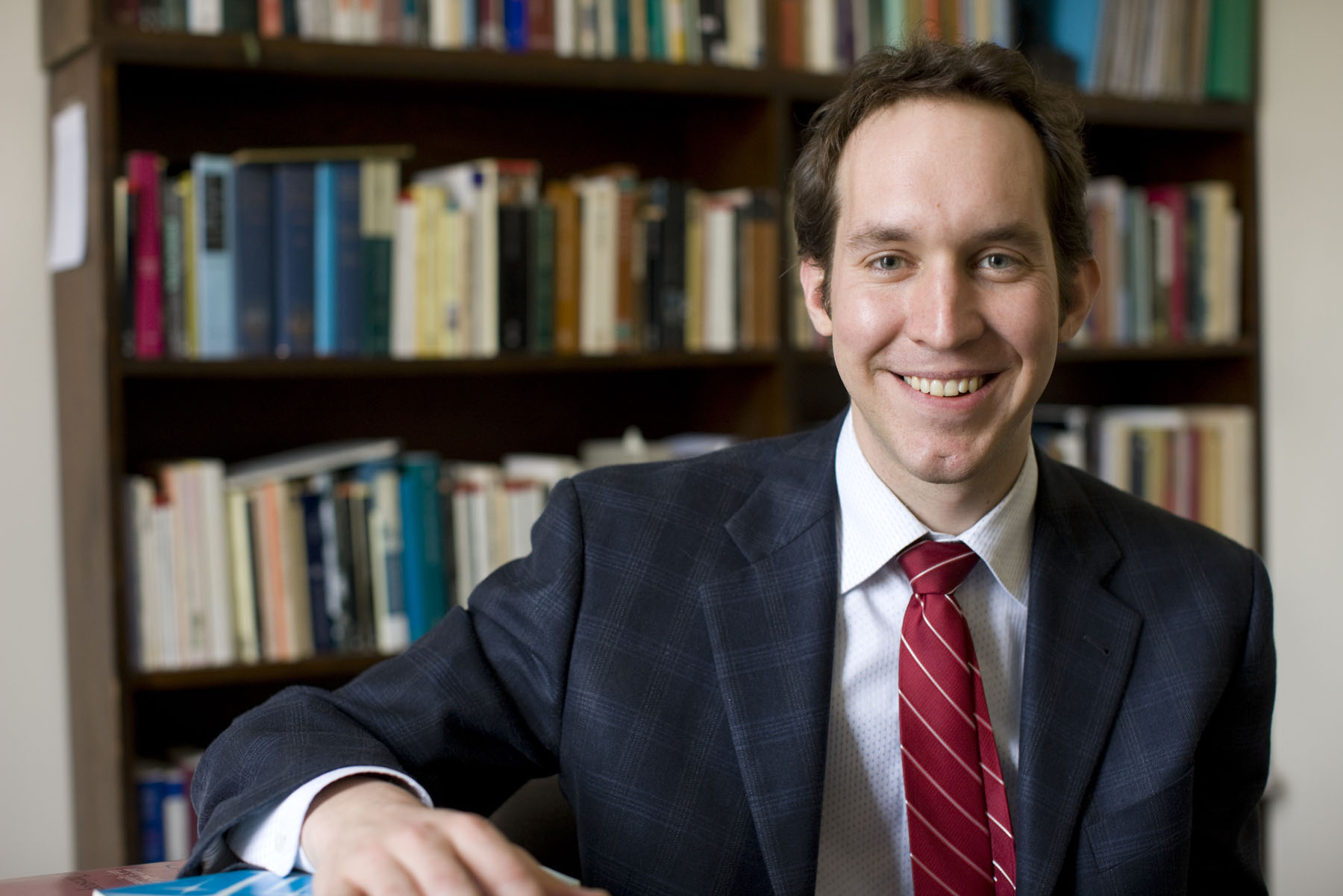March 19, 2009 — When Brad Pasanek was a high school English teacher, he had his students comb through Jane Austen's "Pride and Prejudice," highlighting passages with metaphors involving the title words to reveal how themes recurred and played out in the novel.
These days, instead of a color-coded paperback, he's organizing a virtual reference work of metaphors on his Web site, The Mind is a Metaphor. He draws upon literature written in, or translated into, English, ranging from the ancient Greeks through 18th-century works, including the King James Bible. He has collected and categorized almost 9,000 entries so far.
Pasanek, an assistant professor in the University of Virginia English department, gathered metaphors from all the digitized texts he can access. He then organizes them alphabetically by subject of metaphor, such as animal, dress, government, liquid, machine, mineral, optics, physics, vehicles, visual arts, war, weather and writing.
The database, which organizes the evidence Pasanek is collecting, can be searched by other categories as well — author, date, genre and religion, for example. The database will eventually be the source for a dictionary of metaphor he is writing.
Pasanek said he is most interested in the "aerial views" of metaphor use he creates from his online searching, he said, because they allow him to see and analyze intellectual history and descriptions of the human mind through the literary device.
"The mind, language, the world – with metaphors, you can deal with all of this at once," he said.
The phrase, "the mind is a metaphor," is, in fact, a metaphor. The Merriam-Webster dictionary defines metaphor as "a figure of speech in which a word or phrase literally denoting one kind of object or idea is used in place of another to suggest a likeness or analogy between them." A metaphor is made of figurative language, as opposed to a literal description.
"When you locate an explosion of metaphor at a specific moment, you can ask, 'Why, what's going on and how are these related?'" said Pasanek, who began this research — using index cards — as a Stanford University graduate student.
Metaphors show us how we're thinking about ourselves. They'll vary depending on the authors, philosophers, political groups or historical time, he has found.
Take the ubiquitous metaphor of reflection, from a 1611 translation of the Gospel According to Luke in the King James Bible ("The soul may magnify the Lord") to Lord Byron's tribute to a lady in a poem from the early 19th century ("Look on her features! and behold her mind / As in a mirror of itself defined)."
During the Enlightenment, philosophers and poets put a new value on introspection, which Pasanek found coincided with a new interest in optics.
"He considers man and nature as essentially adapted to each other, and the mind of man as naturally the mirror of the fairest and most interesting properties of nature," wrote William Wordsworth in his "Preface" from "Lyrical Ballads."
As mirrors became affordable, manifestations of reflection were used to the point of overuse. But the metaphor is so pervasive, the late philosopher Richard Rorty, who formerly taught at U.Va., sought to break it. In his 1979 book, "Philosophy and the Mirror of Nature," he wrote, "The picture which holds traditional philosophy captive is that of the mind as a great mirror, containing various representations — some accurate, some not — and capable of being studied by pure, non-empirical methods."
The biggest surprise for Pasanek is that his work has disproved "the tacit assumption, shared by a variety of scholars, that changing metaphors are indicative — if not productive or constitutive — of broader cultural change," he writes on the Web site. "In contrast, my research makes clear that, with few important exceptions, metaphors of mind in the 18th century display astonishing persistence in the face of Enlightenment ferment and revolutionary change."
In spite of all kinds of political, cultural and linguistic changes, metaphors actually stick around, Pasanek said. They often get overused and become "dead" metaphors, but then they'll be re-animated, adapted and put to new uses.
In March 2006, he began a blog-like site of short explications of his favorite metaphors. He adds to those pages as he continues working with the database, "fishing out especially interesting metaphors of mind."
Pasanek considers his Web site still in its beta phase, but has recently begun a collaboration with the University Library's Scholars' Lab, whose staff is rebuilding his Web site.
"We see this as a long-term collaboration with Brad Pasanek, and together have outlined some great ideas and features for the site," said director Bethany Nowviskie. The Scholars' Lab works with faculty to make their digital projects as boundary-pushing and experimental as they care to make them, she said. The lab's goal is to "ensure that there are paths to preservation for these rich contributions to the scholarly record.
"We want to help him develop a next-generation interface and make sure that his metaphor collection is ready for the questions researchers will want to ask of it in the future."
As George Eliot wrote in 1840: "But then, it is open to some one else to follow great authorities and call the mind a sheet of white paper or a mirror."
Media Contact
Article Information
March 19, 2009
/content/english-professor-brad-pasaneks-database-metaphors-illuminates-history-thought-literature

